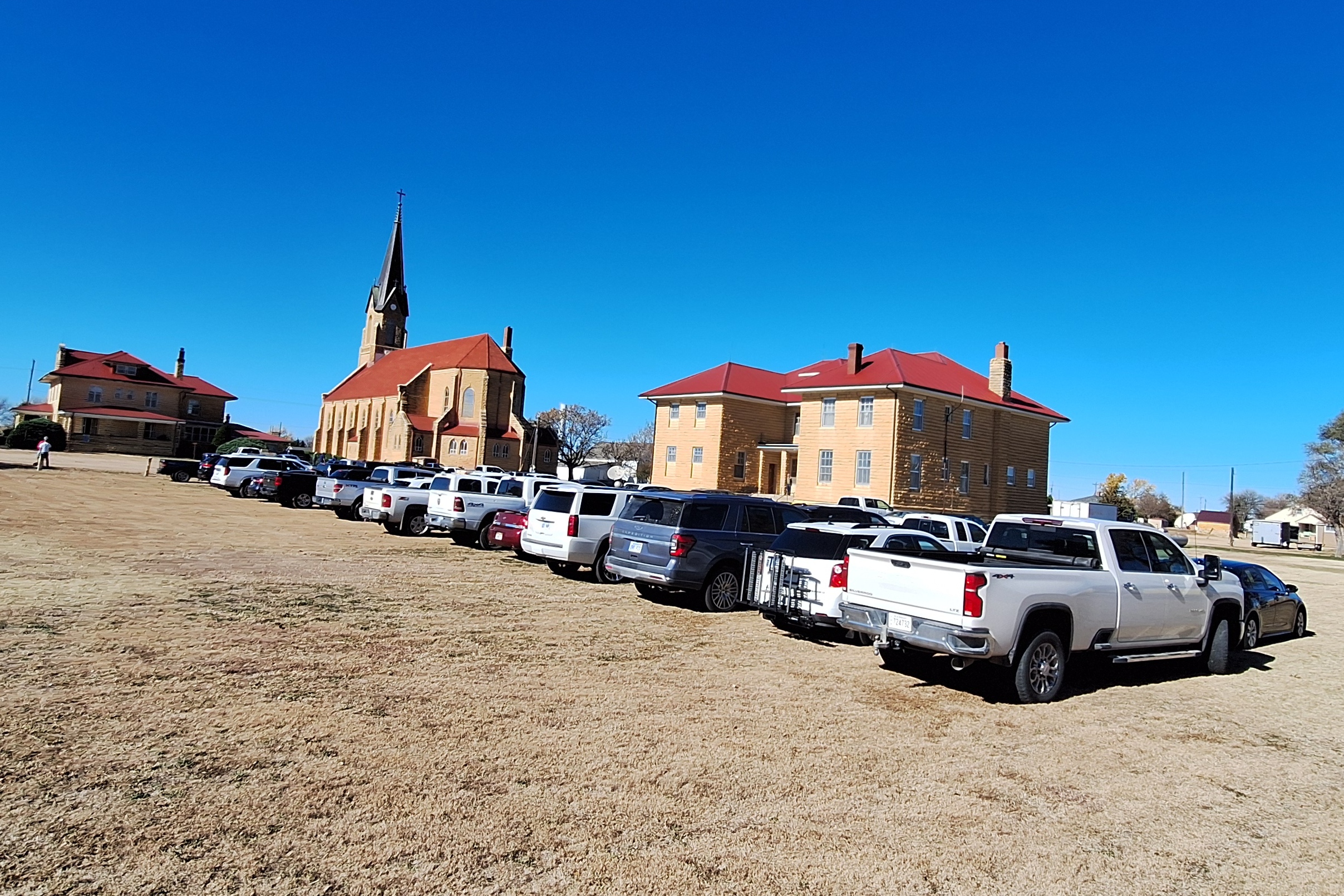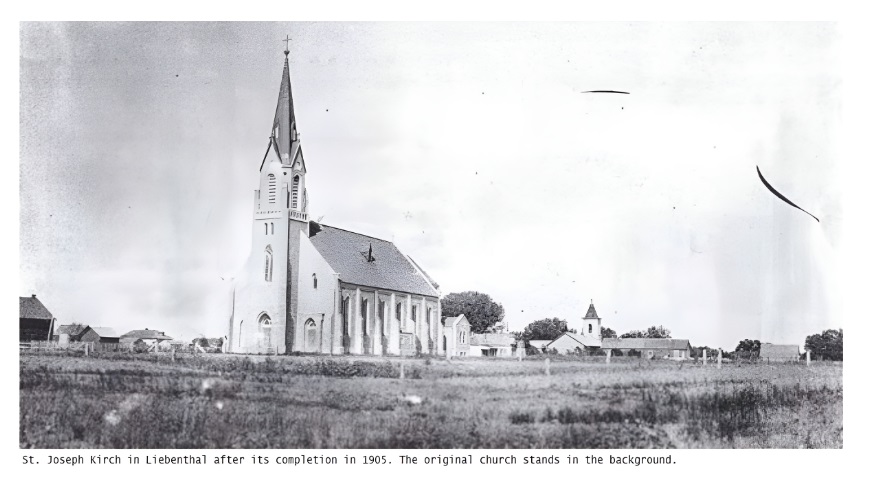St. Joseph Church Dinner & Tours
Sunday, November 10, 2024
We celebrated our Volga German heritage in Liebenthal - the first Volga German settlement in the area.
Schedule of Events
11:00am - 1:00pm: Roast Beef & Chicken Noodle Dinner, Parish Hall - School Basement
12:00pm - 2:30pm: Tours of the Church, Rectory and School
12:00pm - 2:30pm: Historical Displays in the school building - main level
Historical Presentations in the Church
1:00 pm: “Father Valentine Sommereisen, Founding Pastor of St. Joseph”
Father Reggie Urban, Hays, Kansas
1:45 pm: “St. Joseph Church National Register Listing”
Trevor Yocum, Fort Hays State University GTA, Department of History & Philosophy
2:00 pm: “History of St. Joseph Church”
Glen Herrman, St. Joseph Church Board Member and the Great Great Grandson of Jacob Herrman, Sr. and John Lechleiter
Event Videos
You may need to turn up the volume on your computer or television.
Father Reggie Urban - “Father Valentine Sommereisen, Founding Pastor of St. Joseph”
St. Joseph Church National Register Listing”
Trevor Yocum, Fort Hays State University GTA, Department of History & Philosophy
Event Photos
COMING SOON
About St. Joseph Church
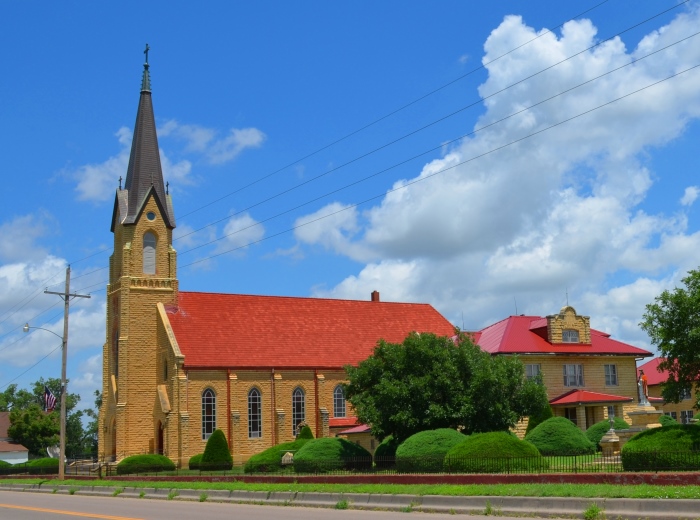
The first Volga German settlers in the area arrived in Hays, Kansas on February 21, 1876. The following day on February 22, a group of settlers established Liebenthal near the banks of the Big Timber Creek in northern Rush County. Settlers immediately began construction of the first sod houses to provide shelter. The following day, the area was hit by a blizzard creating harsh conditions for the new arrivals.
The Roman Catholic settlers first held church services in the open air until they completed their church in 1878. It was the first native limestone church in the area. By the early 1900s, they had outgrown their church and a new building was needed. German-born architect, Viktor Klutho, of St. Louis, Missouri drew the design for a new Gothic style church. From 1902 until 1905, the members of the parish worked to complete the building under the leadership of Father Roudolph Stollenwerk, who had immigrated from Germany. Over two thousand loads of native “Fencepost limestone” were quarried from a hillside northeast of the settlement. They moved the cut stones by wagon, cut, shaped, stacked and set them to form the walls of this beautiful building. The stained glass windows were made by an Austrian/German artist. The sign above the doors inscribed, “St. Joseph's Kirche” was carved by the hand of Father Stollenwerk. On May 28, 1905, Rt. Rev. Bishop Hennessy dedicated the church.
For a while, following construction of the new church, they used the original building as a parochial school until constructing the new three level school building in 1917.
On Sunday, August 12, 1917, fire destroyed all of the wood sections, roof, and steeple of the cathedral as well as the native limestone rectory. Again under the leadership of Father Stollenwerk, the parishioners rebuilt the roof and interior of the cathedral using the original walls. They reconstructed it almost exactly as the original with changes to the roofline above the apse on the east. The parishioners constructed a new rectory in 1918. They used the large hall on the top floor of the school for masses until the church was completed.
On Sunday, December 27, 1959, fire again destroyed the interior of the building. After a lot of prayer and consideration, the parishioners voted to rebuild. They dedicated the reconstructed church in 1961. This time, the interior walls and the altar were no longer as ornately fine as before the fire. However, the original stone walls are those erected by the Liebenthal forefathers. Located near the church are the school, constructed in 1917, and rectory, constructed in 1918. Both are constructed of native stone quarried near the community. In 2014 artisans restored and repainted interior walls of the church.
Today, St. Joseph's Kirche stands as one of the most beautiful churches on the Kansas plains. At least five men from the church have entered the priesthood, and a number of its ladies have dedicated their lives to religious service. Liebenthal holds the distinction of being the first Volga German settlement in the region. The name Liebenthal means “Love Valley” and its people have proven themselves to be hard-working, faithful, and resolute. The village has a number of its original native limestone structures dating from the late 19th and early 20th century and today it is the second oldest community in Rush County.
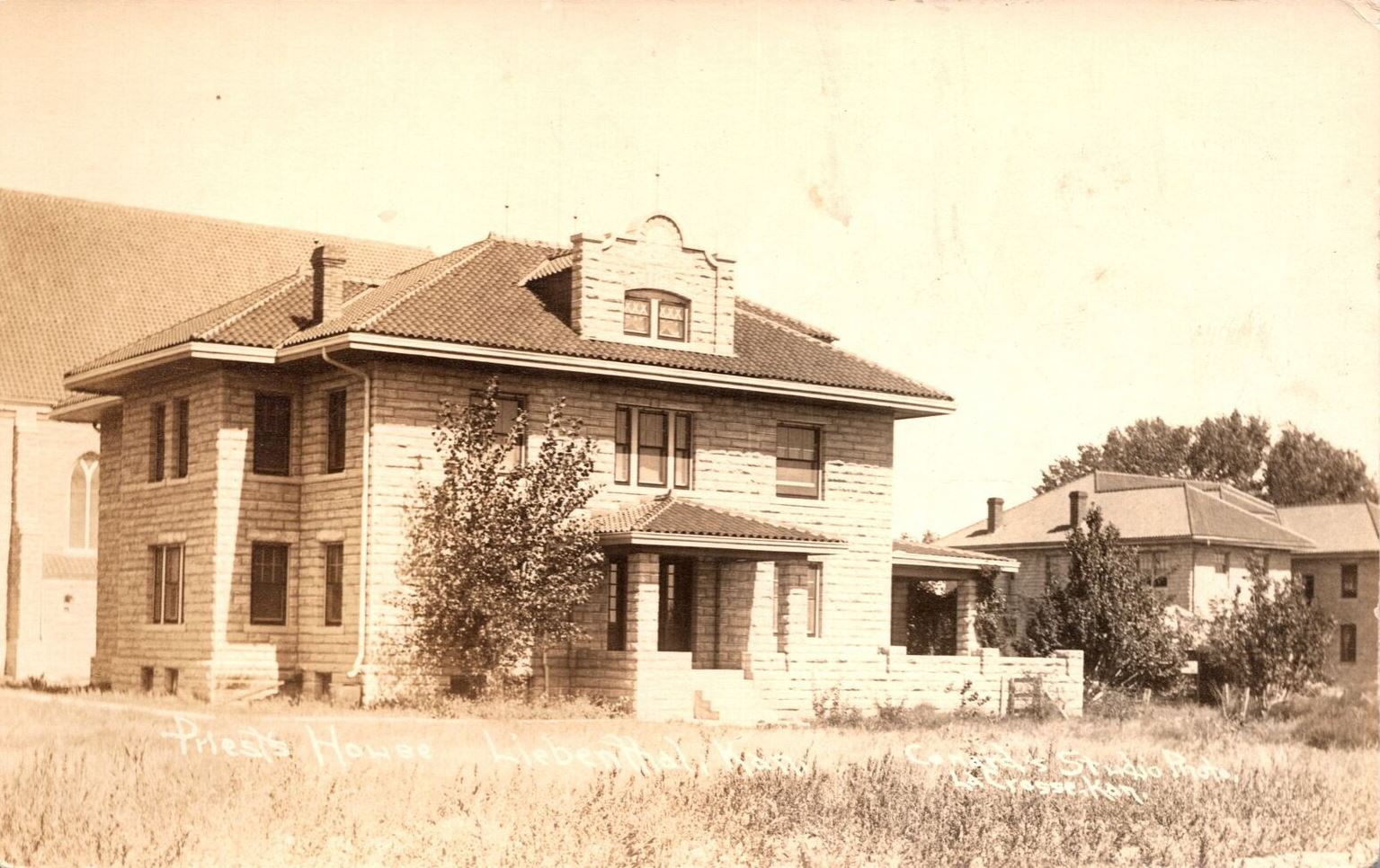
Rectory - 1920
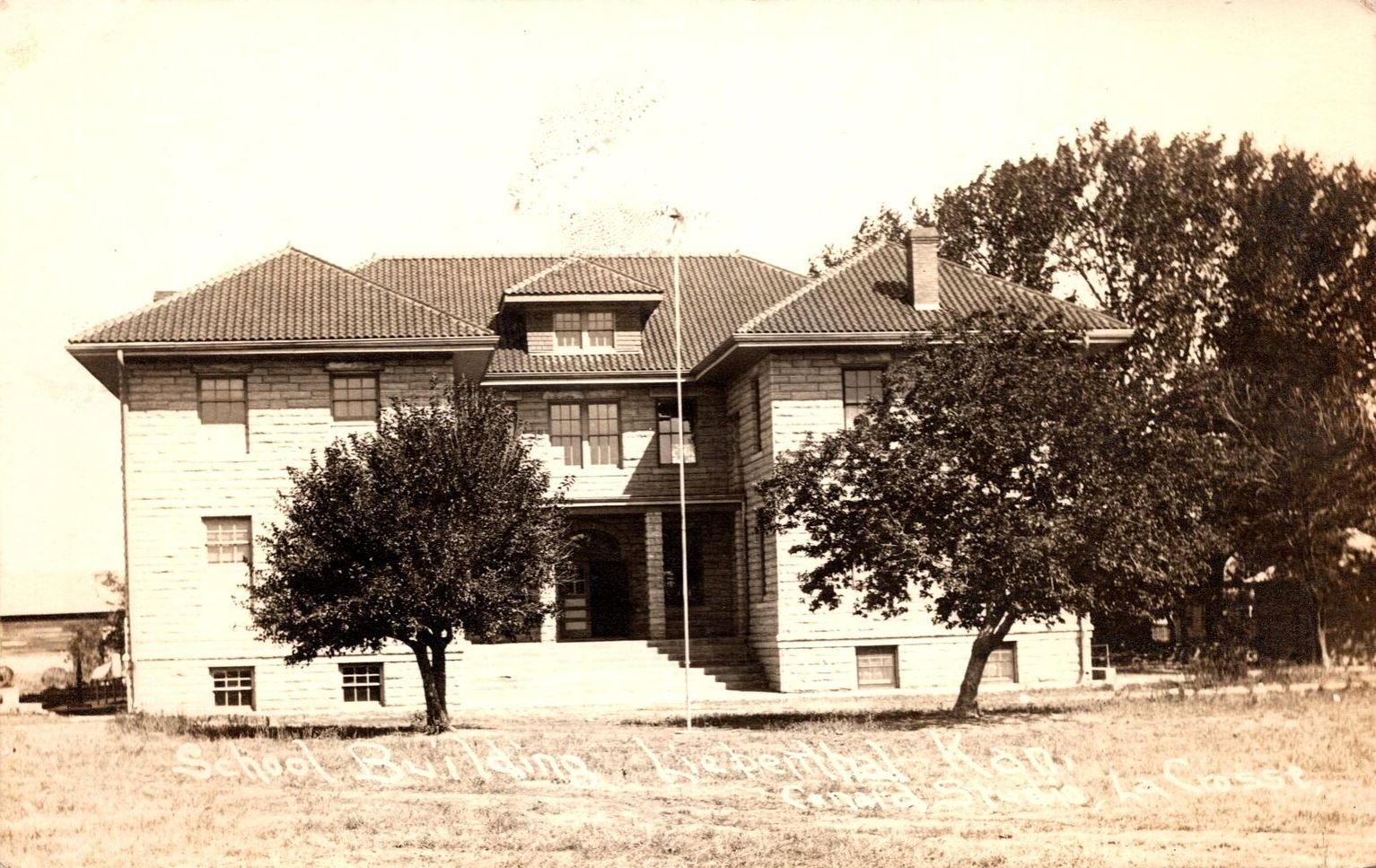
School - 1920
This page is provided by Rush County Economic Development as part of the Sesquicentennial celebration, The 150-Year Rush.

